by Peter Robinson
Thinking time: that vital period when a CEO or senior manager is free to reflect, to contemplate the future, and hopefully come up with strategies that drive a company forward. Sadly, too many leaders ignore the importance of thinking time. They fill their entire weekly schedule with endless meetings, answering questions, solving staff issues, and struggling with management problems. Anything but thinking ahead?
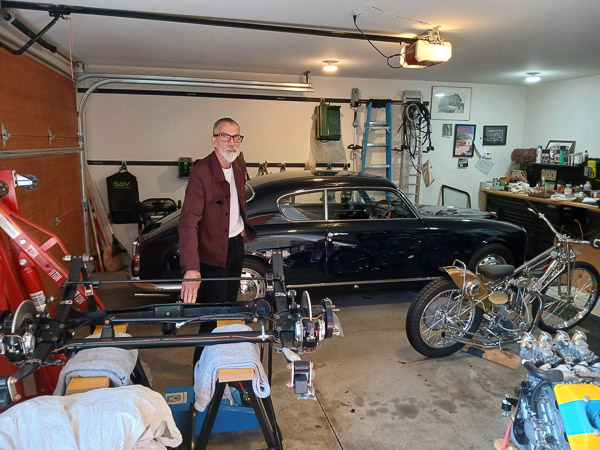
For Michael Simcoe, senior vice president of global design at General Motors – a position that comes with a staff of circa-2000 – thinking time is achieved not in his legendary, Eero Saarinen-designed office, but in the shower. And, of more interest to us, while working on his bikes – he has eight classics, from a Ducati 900 Super Sport to a 1928 Douglas SW5 – and cars in the garage at home in Birmingham, a suburb north of Detroit that incorporates the fabled Woodward Avenue. His black Corvette E-Ray company car lives outside. Currently, Michael’s rebuilding the front and rear suspension of his Lancia Fulvia 1.6 HF Fanalone. And thinking.
Simcoe’s innate fine taste, his discerning sense of style, and the importance of proportion couldn’t be better illustrated than by the exquisite Lancia B20 GT that fills one side of the garage. Living with this aesthetic elegance, beautiful cars, like the original Lotus Elite that’s being restored in the UK, or the Aston Martin DB4 that’s back home in Australia, can’t help but positively influence his thinking time.
How do I know this? Eighteen months ago, in an email exchange in which Simcoe outlined his new design studios, he concluded by asking “How would you like to be part of the new building opening with full access to the studios?”
Turning down such an offer was never an option. As the opening was delayed, my adventure grew to include GM’s advanced design studios in California, the UK and China.
Simcoe set out to change the (GM) world when he assumed design leadership eight year ago. Under CEO Mary Barra and Michael’s direct boss, President Mark Reuss, a persuasive Simcoe has new, advanced design studios in Pasadena, California, Leamington Spa in the UK and Shanghai in China, as well as a production studio in South Korea. Plus, the huge new Design West facility in Warren (MI). But not even Simcoe could keep Holden’s design studio open. It closed in 2020 and the wounds remain. GM won’t put a figure on the global spend, but conservatively it stretches to around (A)$4B.
Simcoe’s promotion in December 2022, adding Senior to his Vice President status, ensured that within GM, Design now has more power than at any time since the Bill Mitchell era ended with his retirement in 1977.
The evidence of Michael’s influence and discerning design direction is all too obvious as he shows me through GM’s wonderous Design West. No details, of course, but good taste and excitement radiate the full-scale EV models and proposals: sports cars, GTs, crossovers, both luxury and sports sedans, SUVs and even in the truck proposals. It’s a shame that financial constraints mean not all of them can make the showroom.
A note of explanation: he’s still Mike to his Australian friends, but Michael or Mister Simcoe – now with a handsome beard – to most of his American colleagues. He’s Michael here.
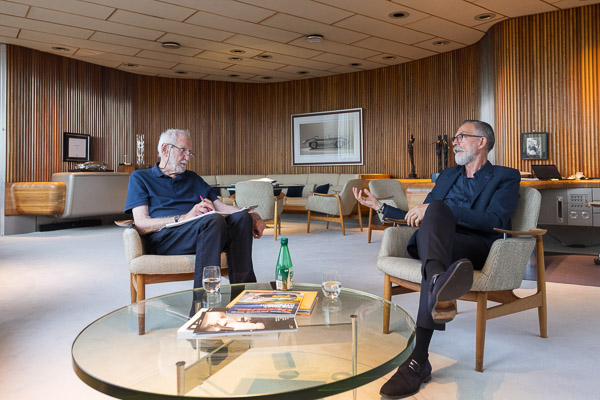
Now, after decades of planning, that began in the early 2000s, GM’s glistening new, low-slung wing that flanks the famed Design Dome to unite more than 700 designers under one roof, is now fully operational, though the renovation of the old design area progresses. Measuring a vast 33,445 sq metres, Design West is almost twice the size of the MCG, or nine soccer fields, to transform the way GM designs cars.
“It’s all one big barn, basically,” says Simcoe. “Essentially the building is open, there are no walls. They’re all here, from Cadillac to GMC, because the brands are equal.”
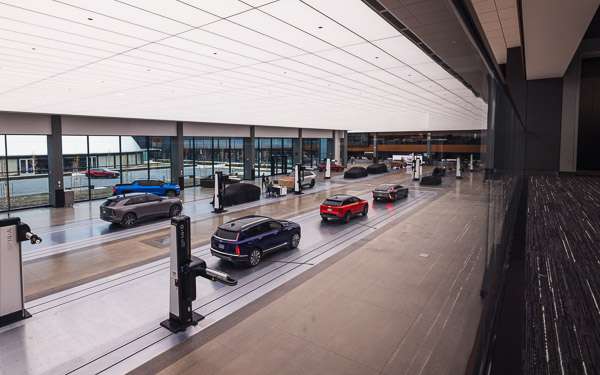
When Eero Saarinen’s (the architect who chose Jorn Utzon’s design for the Sydney Opera House) technical centre was inaugurated in 1956, each of GM’s divisions – Chevrolet, Pontiac, Oldsmobile, Buick and Cadillac, plus GMC, Coach and other non-automotive divisions – had their own closely guarded studio. It was a time when the brands were in direct competition and secrecy was everything. No longer.
Design West houses all of GM’s “brand” studios: Cadillac, Buick, GMC, and Chevrolet, in a vast, open area that’s laid out so the designers, plus the sculptors, strategy and brand people, and crucially, the chief engineer, are all in one place. A first for GM.
No mysteries here. The ground floor is dedicated to exterior, interior, and clay modelling areas, including multiple flush-mounted plates and 44 clay milling sites for the full-scale models.
“It’s all about collaboration,” Simcoe tells me. “Design has always been this place where the empire closes the doors. In recent years we tried to open that up, but it wasn’t really possible because we didn’t have the space to bring in all the people we need to collaborate with. We can do that now.”
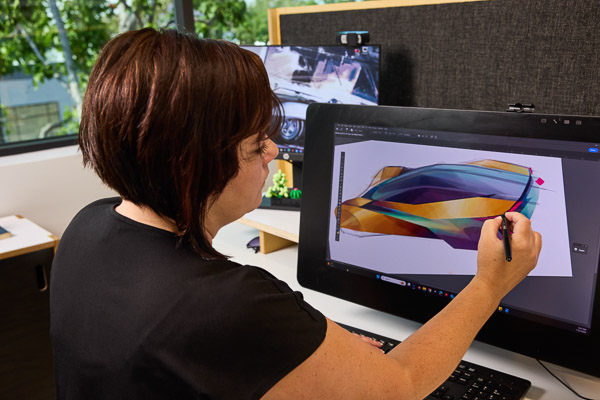
The mezzanine floor provides a welcome viewing platform – no longer do designers need to climb ladders to get a plan view of their work – as well as offices and meeting areas. Under the mezzanine, the people who require a dark environment do the screen work: that’s the designers, engineers and program teams.
By their very nature, design studios are confidential, but here there’s an abundance of natural light, with floor to ceiling glass, and overhead strip lighting that can be varying in intensity so the designers can see their models in changeable degrees of brightness. “So they can see sunset in L.A,” says Simcoe. Acoustic material helps to isolate sound so it’s also quiet. No doubts, this is a pleasant place to work.
Among the building’s many highlights is a presentation room with a 55 foot (16.7metre), 77-million pixel power wall that splits screens and is used for global design reviews. There’s also a hidden door that opens up to reveal an area large enough for a full-scale model, perfect for Ruess’s weekly visits. One corridor stretches 305metres long. From Simcoe’s office to the extremes of Design West is 1.6km. Michael needs a pushbike rather than a Ducati 900 that greets guests when they step into his office.
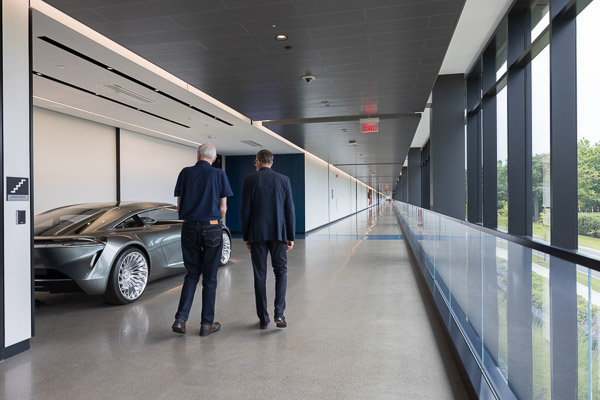
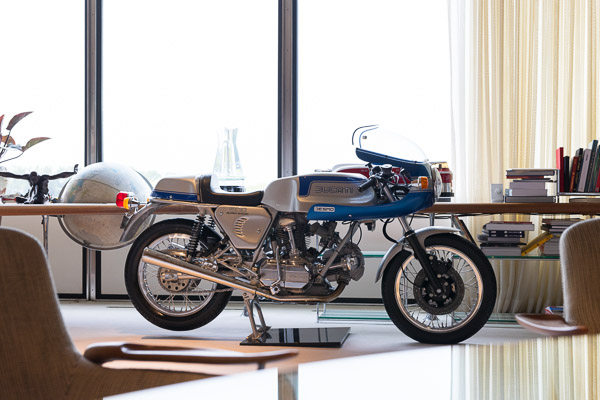
Scattered around Design West are 40 or so art installations, created by current and former GM designers, creatives, sculptors and fabrication shop employees. All selected by Simcoe. To cope with Michigan winters, a tunnel connects the buildings which are clad with 132 panels painted in colours from GM production vehicles, arranged chronologically from 1950s through to the 2020s.
Simcoe is rightly proud of GM’s commitment to design. He knows design is the great differentiator in the EV age when generic SUVs, especially those from China, are commonplace. Assume: grille-less, rounded-off shapes, slim headlights, flush door handles and rear diffuser. No surprise when Simcoe claims 45percent of an EV’s efficiency is in the aero, hence the crucial need for a low frontal area. This despite batteries adding 150mm to any EV’s height and pushing the wheels to the corners to often increase width. GM’s ambitious cd target for EV SUVs is an ambitious 0.30.
The steady flow of impressive concepts – Buick Wildcat and Rivera – and production cars like the Cadillac Lyriq, the 2025 Escalade and Chevy Blazer EV continue. The Rolls-Royce challenging Cadillac Celestiq sedan and Sollei convertible and the two plus two Opulent Velocity coupe prove GM is truly serious in reestablishing Caddy in the ultra-luxury class and, perhaps, resurrecting its old The Standard of the World slogan. It’s a measure of Design’s authority that Celestiq started in the design studio and not product planning. The opening of Cadillac House, surprisingly the Warren campuses only heritage building, allows Celestiq buyers to personalise their custom built (US$340,000) cars. On the Celestiq, what would once be plastic on a regular Caddy is now metal. At the other extreme of GM’s wide product range, the affordability of EVs is fast becoming ever more significant.
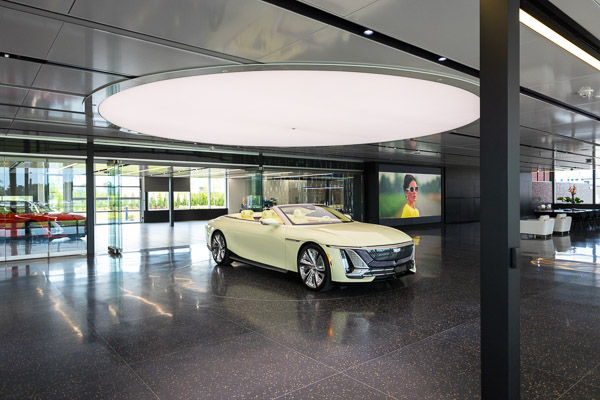
It’s also clear that, despite often sharing the same underpinnings, Chevrolet, Buick, GMC and Cadillac are establishing their own individual and easily recognised design languages. All clean and refined and without the overwrought surfaces, lines and shapes of too many of today’s cars.
We all know, any design team’s work can only be as good as management allows. Seems under Ruess, Simcoe and follow Australian Andrew Smith, who runs the advanced design studios, anything is possible. You need proof: published reports by GM Authority, an independent website devoted to GM products, and rumours in Detroit insist Corvette is to do a Porsche and expand beyond sports cars to include sedans and SUVs. I couldn’t possibly comment.
GM’s presence in Southern California dates back to the 1980s. The previous design studio in Hollywood was leased but, when that expired in 2021, GM decided to buy a much larger building in Pasadena, just eight kms from two schools important to recruiting future talent: the Art Center design college and CalTech (California Institute of Technology).
“There’s always been a fascination with the automotive culture and the design thinking that happens here in California,” says Brian Smith, who worked on the Celestiq and Lyriq, and is now design director at GM Advanced Design California. “It’s very different logic to the rest of the world, and very different to where GM is in Detroit.”
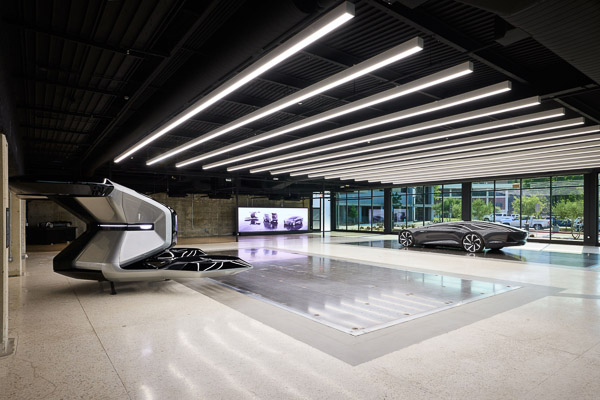
The major renovation included cutting a massive hole in the first floor and the roof to allow natural light into the area used for clay models and the mills and, as at Design West, create a mezzanine viewing floor.
“We really believe in physical models,” says Andrew Smith. “We can do really detailed digital visualization, but we believe in making models.”
Brian Smith adds, “We’ve got four clay milling stations versus one, which enables us to quickly make models from data. We’ve got six modelling plates versus the three we had in North Hollywood; two build plates instead of one; and we’ve also got more digital screens: two 16-foot LED walls, and a 20-foot portable LED wall. This gives us 100percent more project capacity. With full concept build capability on site, we can go straight from sketch to clay to running concept vehicle in six months.”
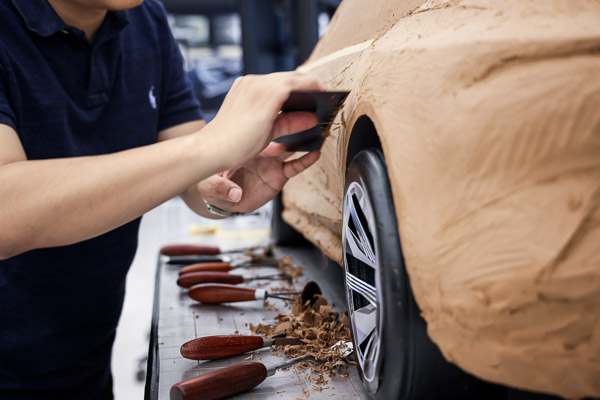
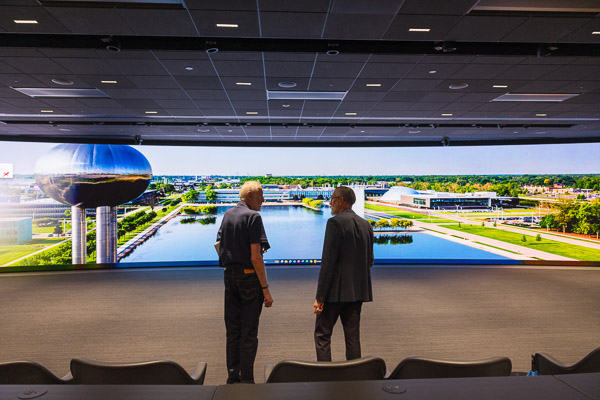
“This studio is really going to be responsible for pushing boundaries,” Andrew Smith told me. “In this new design centre, we can push the boundaries into the future. I’d like to lead the company into places that are unexpected. Our job is to support the GM mission of zero emissions, zero crashes, and zero congestion, and in California we’re in the right environment of early adopters and people who are ready to embrace EV and AV technology.”
“If you look at the vehicles that have been designed in California, they have a very different ethos and I think it comes back to their car culture. The Ciel concept is something that has been designed for California – you know, driving through the foothills of some beautiful winery or vineyard. The climate really drives the designers to think about those kinds of concepts.”
What of right hand drive? We know the Corvette and the Cadillacs EVs: Lyriq, Optisq, Vistiq and even the Escalade IQ are going to be produced at the factory in rhd. What of the future and smaller, more affordable models? Most of the issues are solved by steer-by-wire – a system of actuators – that replaces the mechanical link between the front wheels and the steering wheel and can be used in manual and automated driving. Already fitted to the Tesla Cybertruck and Lexus RZ450e, drive-by-wire makes conversion from lhd to rhd easy. GM is experimenting with a steering wheel that both folds away and slides effortlessly from one side of the car to the other.
However, Australian design rules state that even cars with electric steering systems must retain a physical connection between the steering wheel and front wheels to act as a redundant control in case of an electrical failure. It’s another case of technology advancing ahead of regulations.
One unintended consequence of GM selling Opel to PSA (now Stellantis) in 2017 was the loss of its European design centre in Germany. Time for a Simcoe think. Especially as GM’s gradual withdrawal from once significant markets like Europe, India, Australia, South Africa, Russia and Thailand, essentially reduced the once globally dominant manufacturer (it’s now number five behind Toyota, VW, Hyundai/Kia and Stellantis) to a regional car maker concentrating on the Americas and China.
Simcoe realised, “We needed alternative (design) options, fresh eyes, we needed the Europeans.”
Once Stuart Norris, who heads the Shanghai studio, learned that Julian Thomson had resigned as head of Jaguar design, he contacted the talented Brit who expressed interest. Once Thomson’s six-months gardening leave expired in December 2022, he joined GM and, with the help of designers Doug Hogg, Mark Humphreys and Dominic Najafi, all poached from JLR and Aston Martin, began work (from home) on two projects. The first, in competition with the Pasadena and Shanghai advanced studios, an alternative Corvette C9, the second, a secret project for GMC.

“We didn’t design a Ferrari or a Porsche and put a Corvette badge on it,” says Thomson. “We wanted to present a different point of view that didn’t duplicate the American work, not necessarily to win the competition, but to be a positive influence. We wanted to be bold, to make an impression, to present a story telling of what was good about these brands.”
On March 29, 2023, the Corvette and GMC concepts were digitally presented to Simcoe, his senior design team, and Mark Ruess, in the Warren Dome. The British Corvette made such an impact Julian, appointed design director, was immediately asked to establish Advanced Design UK, General Motors, a new, ground up design studio.
“We knew we had the right people,” says Simcoe. “We knew we could build a studio around Julian Thomson, not to be better than the others, it just made good sense.”
Says Simcoe of the UK Corvette proposal, “It’s influenced what we’ve got here (in Warren), the proportions, but we don’t want Corvette to look like a European car, it’s very important that it remains American. But it tells us how the Europeans see the Corvette, they tell the story from their perspective. How the rest of the world sees what we take for granted. There’s a lot of learnings in the car.”
Equipped with a large cheque book, plans for a technically advanced studio that drew on Design West, and an almost empty team sheet, Thomson started creating the studio in Leamington Spa in the UK’s Midlands close to Coventry, the traditional home of the British motor industry. GM’s new studio, now home to 35 people – representing 14 different nationalities – opened in October 2023. It’s almost a mini version of the new Warren studio with its open plan, mezzanine viewing/office floor and two 20metre long plates and six milling machines.
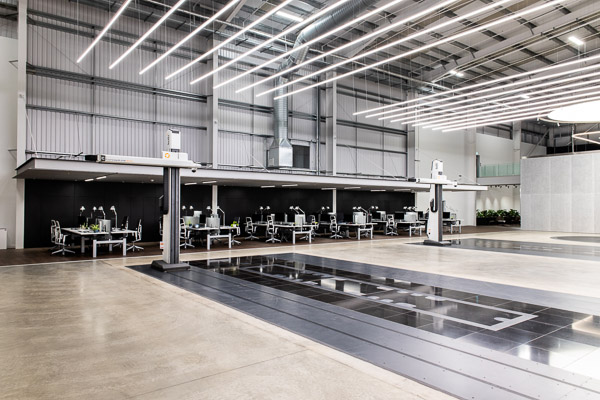
“It’s all new equipment,” says Thomson, “from different European suppliers. The interface between digital and clay helps speed and efficiency. Clay is still king. We can view the clay from the mezzanine floor, and take it outside so it becomes the control model.”
“To pick a team from scratch is a privilege,” he says, and it is immediately obvious the designers are friends who enjoy working together in what comes across as an open and welcoming organisation.
“I’m working with my friends, like minded qualities creating great products, what’s not to like.”
Refining surfaces of any models now means GM can take the digital model to clay and, after any modifications, back to digital on a hourly basis. Says Simcoe, “The top leadership recognise the important of a physical model. Standing around together you see a problem as it’s happening. That’s the real takeaway.”
“We want to be complimentary to the Mothership,” claims Thomson, “We want to have projects with all the brands, no favourites, and design a diversity of models: SUVs, sedans, coupes, a hypecar.
“Working on different brands every day is exciting. To create visionary, yet credible concepts that can be quickly translated into exciting products.”
When, after seeing dozens of C8 Corvettes on Detroit’s roads, I suggest to Thomson and the gathering of designers that, while it drives brilliantly, in terms of styling the C8 may be the least successful Corvette (only rivalled by the excessively chromed 1958 edition), there’s silence. Designed under Ed Welburn’s leadership, the mid-engined C8 is way too busy, especially at the rear, and hints excessively of McLaren and Ferrari. The only thing I can tell you is that the next Corvette is far cleaner and better looking than the too-busy C8 that’s due in 2028, according to GM Authority, an independent website devoted to GM products.
This topic goes no further.
“The question you need to answer is: are advanced studios there to win projects?” says Thomson. “Or are you there to influence the mothership? We want to present different ideas, inspire the team and influence,”
“Corvette needs to be a global brand, yet an authentic and proud American brand like Top Gun,” adding, “Ferrari has gone beyond sports cars and is now a luxury brand.”
I look forward to driving a car we designed,” says Thomson.
GM first opened a design studio, in partnership with SAIC, in China 1998. Set up in Shanghai by former Holden design boss Phil Zmood, it’s now been replaced by a much-revamped studio that’s closer to the Shanghai airport.
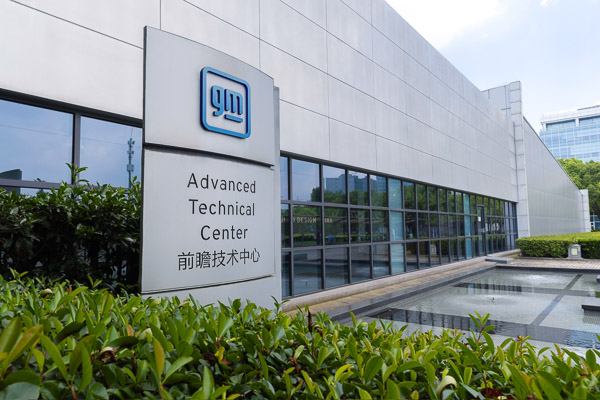
There is much to do. GM’s China sales slid by 29percent in the second quarter of 2024, its market share has dropped from a high of 15percent to 8.6percent last year and continues to fall while GM’s joint venture, called SAIC-GM-Wulong contributed 60percent of GM’s 2.1m cars sold last year.
GM (and all other car makers) face a near impossible task. How to compete with government supported brands who put market share ahead of profitability? As well there’s this: In China the term 996 doesn’t refer to a Porsche model, but hours worked – 9.00am to 9.00pm – six days a week.
Cars, in China commodities like white goods, don’t need the same level of chassis sophistication, so they are cheaper to develop. Nobody talks about taking their cars to the Nürburgring, though a GM joint venture does have a proving ground 250km west of Shanghai.
What’s far more important is the EV’s speed-to-market. Stuart Norris, the Brit who runs the GM’s Shanghai Advanced studio, says many of China’s circa-150 car makers have “development cycles of between 15 months (for a new top hat) and two years (for a new car).”
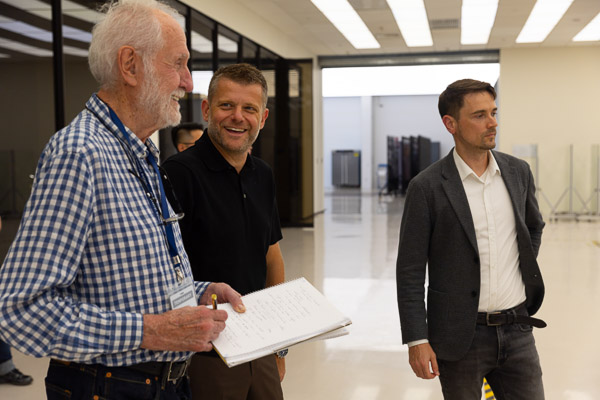
Currently that’s half the time demanded by rivals from Europe, Japan, Korea, and the USA. No wonder their level of anxiety is on the rise.
Simcoe says of GM’s Chinese rivals, “Speed and discipline are great for the business but have done little for the (design) craft. Styling of the body and interior have become an exercise in speed-to-market with something that matches the competition with no real intent to have your own voice.”
Shorter development times means they can more quickly incorporate the latest technology shifts and changing consumer behaviour. Important in a country with little brand loyalty. China’s ubiquitous design language is seen to give GM an advantage. Norris claims says 80percent of designs essentially are generic. Based on what I saw on the streets of Shanghai that’s only a slight exaggeration.
The Shanghai-based studio, recently renovated, expanded, and updated with new technology, has seen a doubling of the design team since 2021. The studio includes digital and clay modelling, a paint shop and, unlike the UK studio, has a CMF (colour, material, and finish) department. But the concept cars are built by local suppliers – eight weeks from digital data to a full-sized model – and there is no mezzanine viewing floor. The creative head count has grown from 29 to around 60, from seven countries (other than China), with an average age of a youthful 33.
The studio is currently working on “multiple projects for GM’s global brands”, with the portfolio including Chevrolet, Buick, GMC, Cadillac, Baojun, and Wuling. The emphasis seems to be on more affordable, smaller EV models to more effectively take on the domestics.
“We want to push the voice for China,” says Norris. “Our role is to measure the pulse of the Chinese customer, while looking at our global programs and to be influential.”
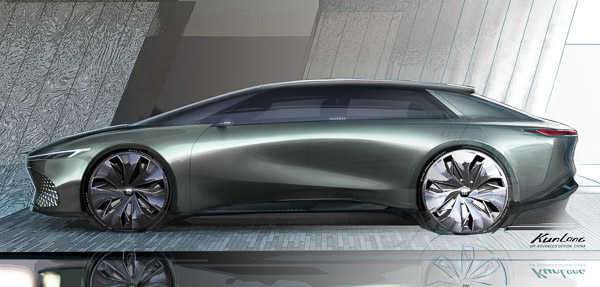
The first tangible result of the revamped studio is the Buick-badged Proxima concept, though Norris admits the gull-winged vehicle is not for production. Mia Min, Senior Design Manager, who led the work on the Proxima, says, “We’re not afraid to explore and experiment. We have these amazing young talents, they’re bold, thoughtful and also agile, which is extremely important for advanced design work. Gen Z have a completely different way of thinking, they want to express themselves, they want to create their own values. Taste wise they are unisexual.”
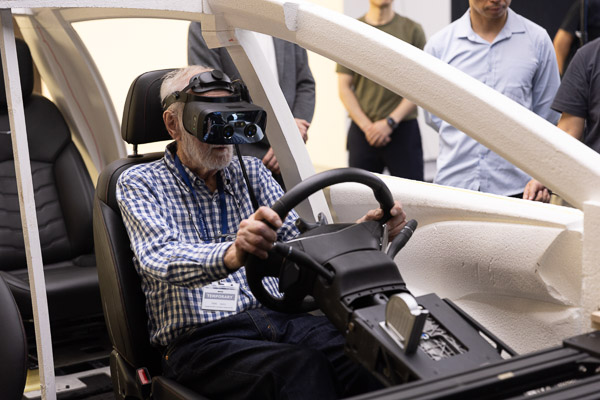
I’m asked to wear a VR/AR headset and climb into a seating buck of a design proposal. For those who don’t know VR – virtual reality – creates an immersive experience that simulates the interior. Combined with AR – augmented reality – that adds digital elements to the live view, I’m suddenly in a virtual production interior. It’s a weird, giddy inducing experience that Norris says his designers are using to bring coding and the gaming world into design. I can’t pretend to understand how Grandstudio’s DigiPHY patented system works, only to know it is hugely impressive in its ability to permit refinement of an interior in seconds and to simulate anything from single-seat cars to three-row commercials.
“It means we can check quickly without building specific seating buck models in full scale,” says Norris.
Global studio tour over, I’m convinced that when, in 50-years, they write the history of GM design, the Michael Simcoe era will rank with those of Harley Earl and Bill Mitchell as the most important in the corporation’s history.
Michael’s thinking time changed his (and GM’s) world.

Sidebar
Retirement?
GM’s mandatory retirement age of 65 forced Harley Earl, Bill Mitchell and the others to depart. When Bob Lutz returned to GM in 2001 as head Global Product Development, he found a design department at war with itself, its authority much reduced. Lutz opted to give Wayne Cherry a year beyond 65 to give the department stability and to reassert its power. Michael Simcoe, 67 in October, says, “I am still having an influence, so I don’t feel like giving in anytime soon.”

